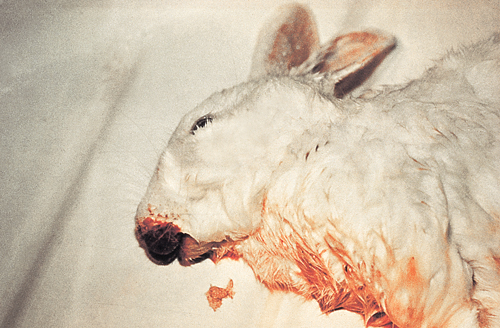Rabbit Medicine and Surgery Q&A 09
| This question was provided by Manson Publishing as part of the OVAL Project. See more Rabbit Medicine and Surgery questions |
This rabbit was found dead one morning. Blood was evident around the face. The rabbit had no previous signs of illness.
| Question | Answer | Article | |
| What are the possible causes of death in this animal? |
|
Link to Article | |
| What postmortem findings would confirm your diagnosis? | Postmortem findings with VHD are of a necrotizing hepatitis and splenitis.
Trauma would be apparent on postmortem examination of the carcass, and there would be an absence of signs of other disease. |
Link to Article | |
